Disclosure: This article contains affiliate links. We may earn a commission from purchases at no extra cost to you, which helps our travel content.
The moment my feet left the board and I found myself suspended—if only for seconds—above the South China Sea, I understood why kite surfers from around the world make the pilgrimage to Mui Ne. This coastal fishing village turned water sports mecca offers the perfect alchemy of consistent winds, affordable instruction, and a laid-back atmosphere that's increasingly rare in Southeast Asia. As someone who's chased both waves and cultural experiences across continents, I can confidently say Mui Ne delivers a uniquely Vietnamese twist on the global kite surfing scene.
Understanding Mui Ne's Wind Patterns: When to Go
Mui Ne operates on a reliable wind calendar that serious kite surfers memorize like scripture. The high season runs from November through March, when the northeast monsoon delivers steady winds between 15-25 knots almost daily. I planned my two-week trip in mid-October, catching the early season when crowds are thinner but winds are beginning to establish their consistency.
What makes Mui Ne truly special is its dual wind system. Mornings typically offer lighter onshore breezes perfect for beginners (myself included for the first few days), while afternoons bring stronger side-shore winds that more experienced kiters crave. The topography of the bay—with its gentle curve and mountainous backdrop—creates a natural wind tunnel effect that amplifies these patterns.
During my stay, I tracked wind conditions using the Vaavud Wind Meter, a compact device that connects to your smartphone and provides surprisingly accurate readings. This small investment helped me plan each day effectively, knowing when to hit the water and when to explore Mui Ne's cultural attractions instead.

💡 Pro Tips
- Download the Windy app before your trip for reliable 7-day wind forecasts
- The strongest winds typically occur between 2-5pm daily
- Book accommodations on Nguyen Dinh Chieu Street for easiest access to kite spots
Choosing the Right Kite School: My Experience
After researching extensively, I narrowed my options to three schools with strong reputations for safety and instruction quality. I ultimately chose Vietnam Kiteboarding School for their IKO-certified instructors and smaller class sizes. The decision proved wise—my instructor Minh balanced technical precision with patient encouragement, a combination that helped me progress from complete novice to independent rider within my first week.
The school provides all necessary equipment for beginners, but as I gained confidence, I appreciated having my own rash guard for protection from both sun and occasional board impacts. If you're planning an extended stay like I did, bringing your own is both hygienic and more comfortable.
Pricing for lessons runs between $40-60 USD per hour for private instruction, with package deals offering better value. Most schools offer 3-day beginner packages that include approximately 9 hours of instruction—enough to get most moderately athletic people up and riding independently. Equipment rental for those who already know how to kite surf costs around $30-40 per day, with weekly rates available.

💡 Pro Tips
- Book lessons in the morning when winds are lighter and more beginner-friendly
- Always request an IKO-certified instructor who speaks your language fluently
- Take videos of your sessions (most schools offer this service) to review your technique
Essential Gear for Mui Ne's Conditions
Vietnam's tropical climate means you'll be kiting in bath-warm water most days, but proper gear still makes a significant difference in comfort and performance. After my first sunburned day (despite liberal application of sunscreen), I invested in a sun hoodie which provided crucial protection during those long hours on the water.
Foot protection is another consideration often overlooked by beginners. The sandy bottom at most Mui Ne kite spots is generally forgiving, but sea urchins and occasional debris can be hazards. I found my water shoes indispensable, especially when launching and landing in the sometimes rocky shoreline areas.
While most schools provide helmets for beginners, having your own impact vest is worth considering if you're staying longer than a few days. Mine provided both flotation assistance and protection from harness chafing during long sessions.
One piece of equipment I wish I'd brought from home was a proper dry bag for my phone and valuables. The makeshift plastic bag solution I initially used didn't inspire confidence, especially on days when I was practicing water starts and spending more time in the drink than on my board.
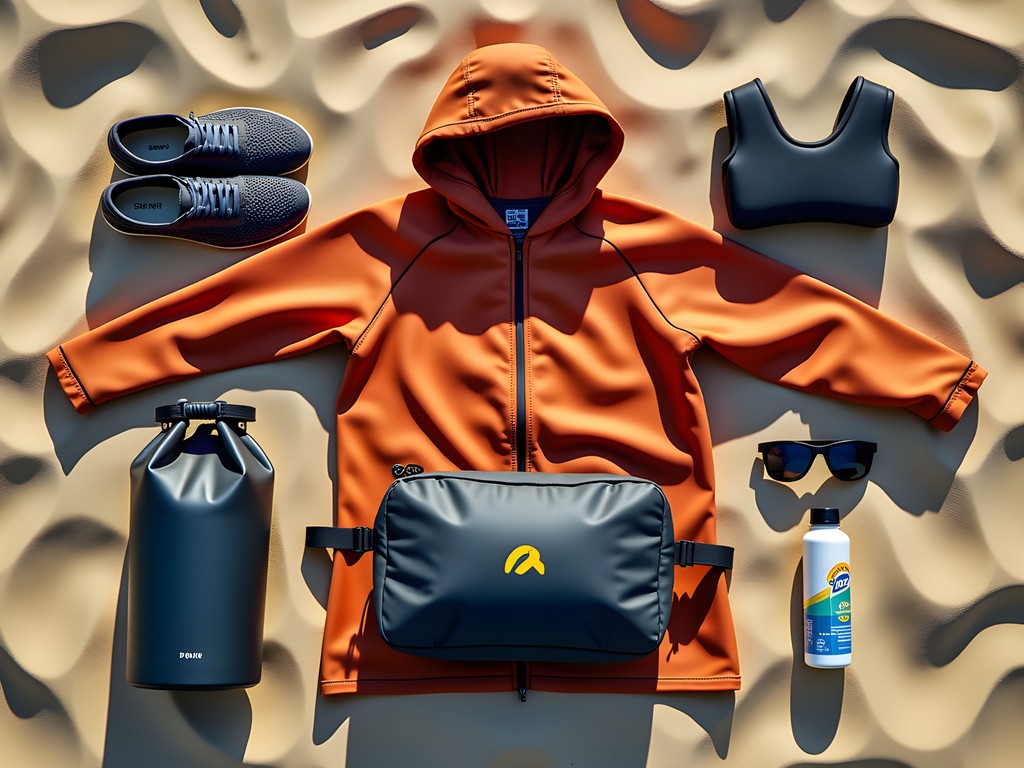
💡 Pro Tips
- Apply reef-safe sunscreen 30 minutes before entering water and reapply hourly
- Bring quick-dry clothing that can be layered for early morning sessions
- Pack a repair kit with adhesive patches if bringing your own kite gear
Beyond the Kite: Mui Ne's Cultural Treasures
What truly elevates Mui Ne beyond other kite destinations I've visited is the rich cultural tapestry waiting to be explored on non-kiting days (or during those morning hours before the wind picks up). The iconic red and white sand dunes lie just a short motorbike ride from the main beach strip. I recommend visiting at sunrise—yes, it means a 4:30am wake-up call, but watching the dunes transform from shadowy monoliths to vibrant sculptures as the first light hits is worth every lost minute of sleep.
The fishing village that gives Mui Ne its name offers a glimpse into Vietnamese coastal life largely unchanged by tourism. Arriving around 6am, I witnessed the return of the colorful fleet and the bustling market that materializes to meet them. Purchasing a few items of seafood from the morning catch led to an impromptu cooking lesson from a local grandmother who took pity on my obvious culinary limitations.
For cultural immersion with historical significance, the ancient Cham towers of Po Shanu stand sentinel on a hilltop overlooking the entire bay—offering both architectural interest and the perfect vantage point for photographs. I found myself returning here multiple times during my stay, drawn by both the spiritual atmosphere and the panoramic views of the coastline where I'd been kiting.
Navigating between these sites is easiest with your own transportation. I rented a GoPro mount for my motorbike to capture the journey between locations, which ended up providing some of my favorite footage from the trip.
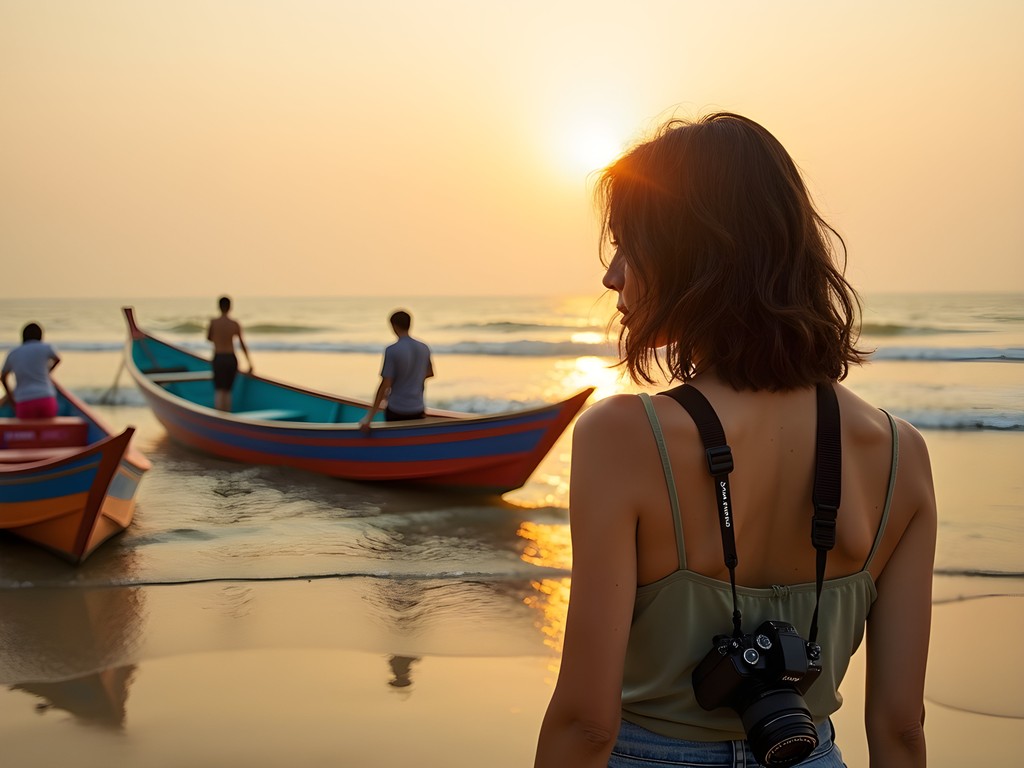
💡 Pro Tips
- Visit the fishing village between 6-7am to see the morning catch come in
- Arrange a Jeep tour to the sand dunes if you're not comfortable driving a motorbike
- Bring small denominations of Vietnamese dong for purchases at local markets
Where to Stay: Accommodations for Every Budget
Mui Ne's main strip stretches for about 10 kilometers along Nguyen Dinh Chieu Street, with accommodations catering to every budget. For my two-week stay, I opted for a mid-range guesthouse called Bien Xanh that offered direct beach access and a small kitchenette—essential for preparing simple breakfasts before early morning kite sessions.
The area known as Ganh Beach (central Mui Ne) offers the best balance of proximity to kite schools, restaurants, and amenities. Budget travelers can find hostels with dorm beds starting around $10 USD per night, while mid-range options with air conditioning and private bathrooms range from $25-45 USD. For those seeking luxury, several boutique resorts offer poolside villas for $100+ per night.
One unexpected highlight of my accommodation was the outdoor shower—perfect for rinsing gear and washing away salt and sand. If you're bringing your own equipment, prioritize places that offer secure storage for kites and boards, as well as areas to rinse and dry gear.
Most accommodations include some form of outdoor space, but I particularly appreciated having a travel hammock to string up between palm trees for afternoon recovery sessions. Those post-kite naps with the sound of waves and rustling palms became a cherished daily ritual.
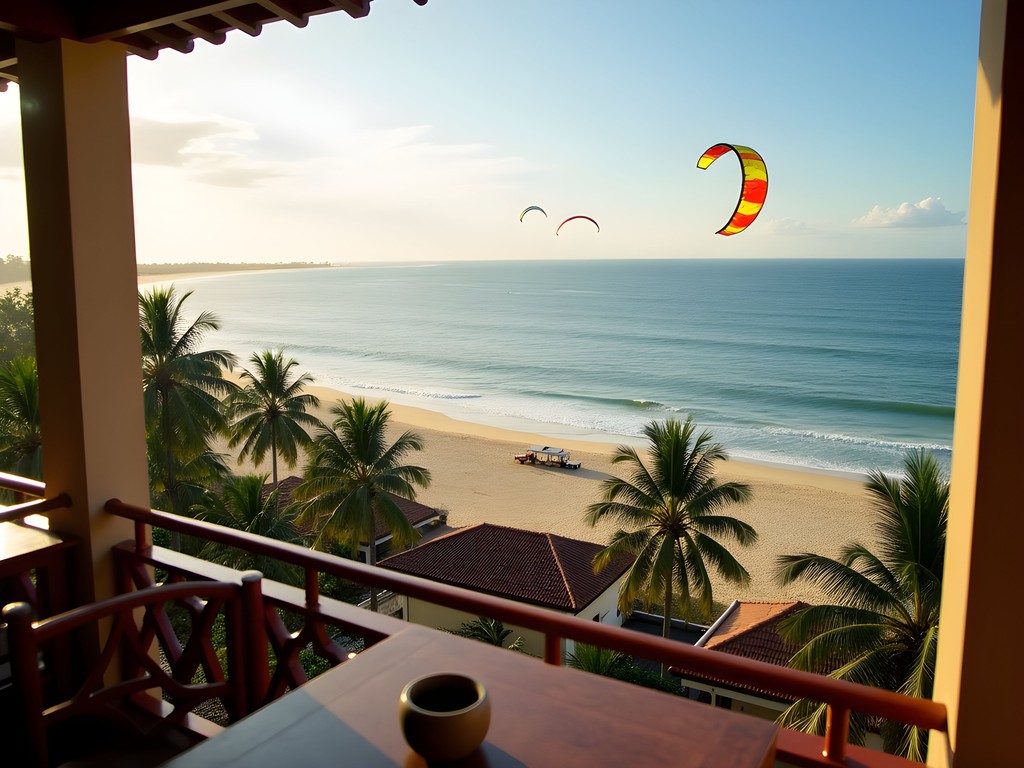
💡 Pro Tips
- Book accommodations within walking distance of your chosen kite school to avoid transportation hassles
- Request rooms away from the main road to avoid traffic noise
- Confirm if your accommodation has dedicated gear storage and washing facilities before booking
Final Thoughts
As my two weeks in Mui Ne drew to a close, I found myself changed in ways that transcended simply learning a new sport. There's something transformative about harnessing the wind's power while immersed in a culture that has done the same for centuries—from the traditional basket boats of local fishermen to the modern kites that now color Mui Ne's skies.
This coastal haven offers a rare balance of physical challenge and cultural richness that speaks to travelers seeking deeper connections with both nature and local communities. Whether you come for a dedicated kite surfing holiday or incorporate it into a broader Vietnam itinerary, Mui Ne rewards those willing to rise with the fishermen, ride with the afternoon winds, and sink into the rhythm of coastal Vietnamese life.
As I packed away my newly acquired kite skills and cultural insights, I knew I'd be returning. The wind-swept shores of Mui Ne had worked their magic, adding another waterborne passion to my collection of experiences. Until next time, I'll be checking the wind patterns and dreaming of that perfect moment of suspension between sea and sky.
✨ Key Takeaways
- Book your trip during the northeast monsoon (November-March) for optimal wind conditions
- Invest in a 3-day beginner package with an IKO-certified instructor for the best learning experience
- Balance kite sessions with cultural exploration of fishing villages, sand dunes, and Cham towers
- Stay along Nguyen Dinh Chieu Street for convenient access to kite spots, restaurants, and amenities
📋 Practical Information
Best Time to Visit
November through March (peak season); October and April (shoulder seasons with decent wind)
Budget Estimate
$50-100/day including accommodation, food, and kite lessons/rentals
Recommended Duration
Minimum 1 week; 2 weeks ideal for beginners to progress confidently
Difficulty Level
Intermediate


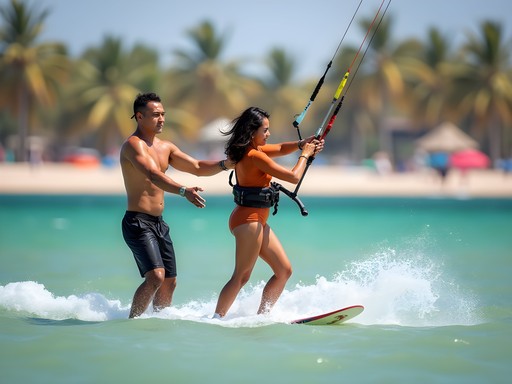
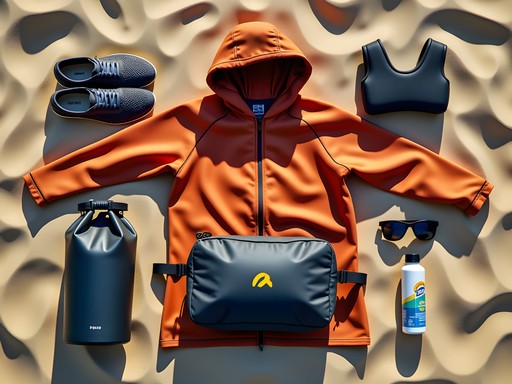
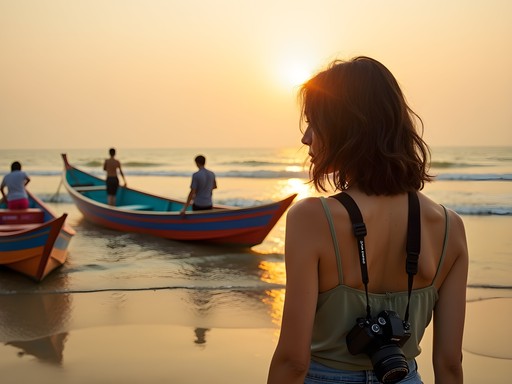











Comments
Hunter Thompson
Absolutely brilliant guide, Elena! Mui Ne was the highlight of my Vietnam trip last year. For anyone heading there, don't miss the morning fish market - get there at 5am and watch the chaos as the boats come in. I'd add that the wind tends to pick up around 11am most days, so morning sessions can be hit or miss. Afternoons are almost guaranteed action though! One thing I'd mention that Elena didn't cover much - the beach erosion is getting pretty bad in some spots. The main kite beach by Jibes is still good, but some areas further north are losing sand fast. Sad to see but the kiting is still world-class. Oh, and try the Vietnamese coffee with condensed milk at Sindbad Cafe - perfect post-session fuel!
wavediver
Just booked my tickets after reading this!!! Can't wait to try kite surfing for the first time. Anyone recommend a good kite harness for a beginner with back problems? Elena's post got me so hyped!
oceanmaster1066
Pro tip: bring your own harness if you have one. Rental ones get nasty after hundreds of sweaty users.
escapepro
Complete beginner here - is Mui Ne good for first-timers or should I learn somewhere else first?
Hunter Thompson
Mui Ne is actually perfect for beginners! The consistent wind means you'll progress quickly, and there are plenty of shallow areas. I learned there in 4 days last year. Just make sure you book a proper IKO-certified school - I used Vietnam Surf Camp and they were brilliant. The best part is you can learn for about half what you'd pay in Europe or Australia!
escapepro
That's so helpful, thanks! Was worried it might be too advanced but will check out that school.
travellegend
Those photos are stunning! The one with the kite silhouette against the sunset is wallpaper material!
Riley Griffin
This brings back memories! We took our teenagers to Mui Ne last year as part of our Southeast Asia family trip. Was terrified watching my 16-year-old launch into the air the first time, but the instructors at C2Sky were incredible with safety. We stayed at Bamboo Village which was perfect for families - close enough to the kite beach but quiet enough for the non-kiters (me!) to relax. The red sand dunes trip you mentioned was a highlight for us too. My husband still talks about that seafood place on the beach with the blue plastic chairs - best crab he's ever had for $10!
skytime
Great post Elena! What month would you say has the most consistent winds? Planning a trip but can only take 1 week off so want to maximize my chances!
oceanmaster1066
Not Elena but December-January is prime time. Been there 3 times during that period, never had a day without wind.
skytime
Thanks! That's exactly what I needed to know.
Ana Robinson
Elena, your post brought back wonderful memories! We visited Mui Ne last year with our kids (9 and 11) and were pleasantly surprised by how family-friendly it was. While my husband went kite surfing, the kids took beginner lessons at Surf School Vietnam - they have a great youth program. For families reading this, I'd add that the fairy stream was our children's absolute favorite activity - they loved walking through the shallow rusty-colored water and exploring the mini canyon. The nearby resorts also offer great childcare options if parents want a day on the water alone. One suggestion: rent a jeep for a day to explore the dunes and countryside - much more comfortable than the typical motorbike tours when traveling with little ones.
roamwanderer
Thanks Ana! That's exactly what I needed to hear. Sounds like plenty to do even for non-kiters. Did you find it easy to get around without renting a vehicle?
Ana Robinson
The main strip is very walkable, and taxis are affordable for longer trips. Many resorts also offer shuttle services to the main attractions. No need for a rental unless you want to explore further out!
windseeker92
Just got back from Mui Ne last month! Pro tip: the morning sessions are less crowded than afternoons. Also, if you're staying for more than a week, negotiate a multi-day package with the kite schools - saved us about 20%!
globebackpacker
Great post! How did you get from Ho Chi Minh to Mui Ne? I've heard mixed things about the buses.
Elena Gomez
I took the Futa Bus (The Sinh Tourist) from HCMC - it was actually quite comfortable and only took about 4.5 hours. Book a few days in advance during high season. The trains are another option but take longer.
Haley Hamilton
I can second the Futa Bus recommendation! Clean, efficient, and they even give you water and a snack. Just don't expect the WiFi to work the whole journey!
Venture X
Premium card with 2X miles, $300 travel credit, Priority Pass